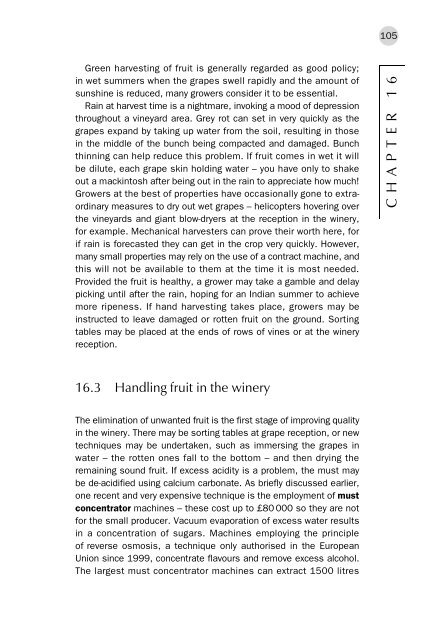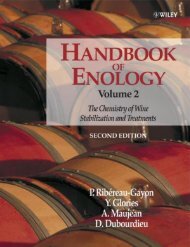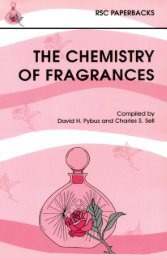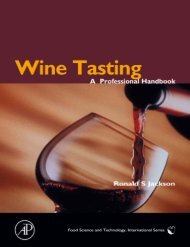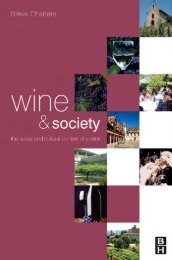Wine Production : Vine to Bottle - Vinum Vine
Wine Production : Vine to Bottle - Vinum Vine
Wine Production : Vine to Bottle - Vinum Vine
Create successful ePaper yourself
Turn your PDF publications into a flip-book with our unique Google optimized e-Paper software.
105<br />
Green harvesting of fruit is generally regarded as good policy;<br />
in wet summers when the grapes swell rapidly and the amount of<br />
sunshine is reduced, many growers consider it <strong>to</strong> be essential.<br />
Rain at harvest time is a nightmare, invoking a mood of depression<br />
throughout a vineyard area. Grey rot can set in very quickly as the<br />
grapes expand by taking up water from the soil, resulting in those<br />
in the middle of the bunch being compacted and damaged. Bunch<br />
thinning can help reduce this problem. If fruit comes in wet it will<br />
be dilute, each grape skin holding water – you have only <strong>to</strong> shake<br />
out a mackin<strong>to</strong>sh after being out in the rain <strong>to</strong> appreciate how much!<br />
Growers at the best of properties have occasionally gone <strong>to</strong> extraordinary<br />
measures <strong>to</strong> dry out wet grapes – helicopters hovering over<br />
the vineyards and giant blow-dryers at the reception in the winery,<br />
for example. Mechanical harvesters can prove their worth here, for<br />
if rain is forecasted they can get in the crop very quickly. However,<br />
many small properties may rely on the use of a contract machine, and<br />
this will not be available <strong>to</strong> them at the time it is most needed.<br />
Provided the fruit is healthy, a grower may take a gamble and delay<br />
picking until after the rain, hoping for an Indian summer <strong>to</strong> achieve<br />
more ripeness. If hand harvesting takes place, growers may be<br />
instructed <strong>to</strong> leave damaged or rotten fruit on the ground. Sorting<br />
tables may be placed at the ends of rows of vines or at the winery<br />
reception.<br />
CHAPTER 16<br />
16.3 Handling fruit in the winery<br />
The elimination of unwanted fruit is the first stage of improving quality<br />
in the winery. There may be sorting tables at grape reception, or new<br />
techniques may be undertaken, such as immersing the grapes in<br />
water – the rotten ones fall <strong>to</strong> the bot<strong>to</strong>m – and then drying the<br />
remaining sound fruit. If excess acidity is a problem, the must may<br />
be de-acidified using calcium carbonate. As briefly discussed earlier,<br />
one recent and very expensive technique is the employment of must<br />
concentra<strong>to</strong>r machines – these cost up <strong>to</strong> £80 000 so they are not<br />
for the small producer. Vacuum evaporation of excess water results<br />
in a concentration of sugars. Machines employing the principle<br />
of reverse osmosis, a technique only authorised in the European<br />
Union since 1999, concentrate flavours and remove excess alcohol.<br />
The largest must concentra<strong>to</strong>r machines can extract 1500 litres


